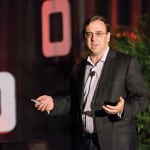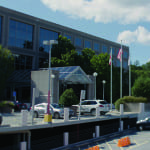Two senior power sector executives opened the 2016 ELECTRIC POWER Conference and Exhibition in New Orleans April 19 with a message that generators need to “think big” and embrace possibilities of disruptive technologies—or risk being run over on the road to the future.
Leo Denault, chairman and CEO of Entergy Corp., delivered the opening keynote welcoming attendees to New Orleans by recounting how the company bounced back from the twin 2005 hurricanes Katrina and Rita, which collectively wiped out 90,000 square miles of Entergy service territory (Figure 1). Facing that challenge, Denault said, “taught us the true meaning of resilience.”
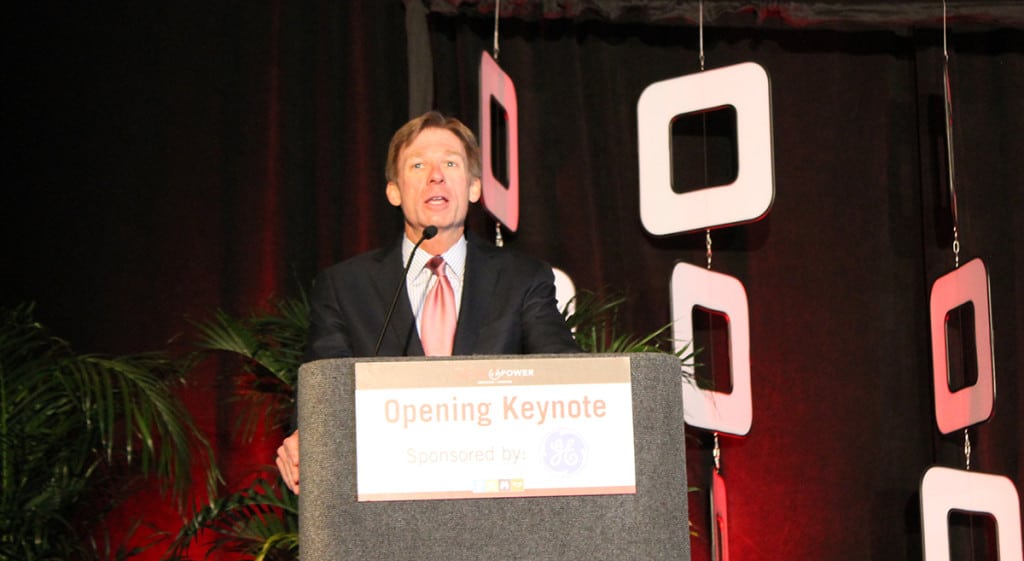
Not Just Repairs
But Denault stressed that Entergy did not seek to just restore the status quo. Rather, the utility took it as an opportunity to make necessary upgrades to its infrastructure—more than $1 billion to its generation assets alone—and take a leap forward into becoming a utility of the future.
This goes beyond technology, he noted. Denault recounted the many ways Energy has worked to help rebuild and support the city’s public education system, turning it from one of the nation’s poorest-performing into a model.
That wasn’t purely done out of altruism, either. Denault pointed out that the power sector as a whole is facing major challenges in staffing as workers age and younger potential employees lack the skills, interest, or both, in filling those slots. For that reason, Entergy has taken a key role in supporting technical education.
“We believe the workforce of the future is right here in our service territory, and that’s why we need to make the changes to help them succeed.”
Denault then pivoted toward other challenges facing the power sector, noting the enormous changes looming on the horizon, such as potential demand from a growing fleet of electric vehicles.
Meeting those challenges means embracing disruptive technologies. By doing that, he said, Entergy will be able to “give our customers the choices they need.”
“Think big,” he said. “Push the envelope. Challenge the status quo.”
The Digital Challenge
Scott Bolick, head of software strategy and product management for GE Power Digital followed that exhortation with an in-depth discussion of GE’s digital power plant initiative, which seeks to harness the power of new digital technologies to create a smart, flexible, multidirectional grid from generation to consumption (Figure 2).
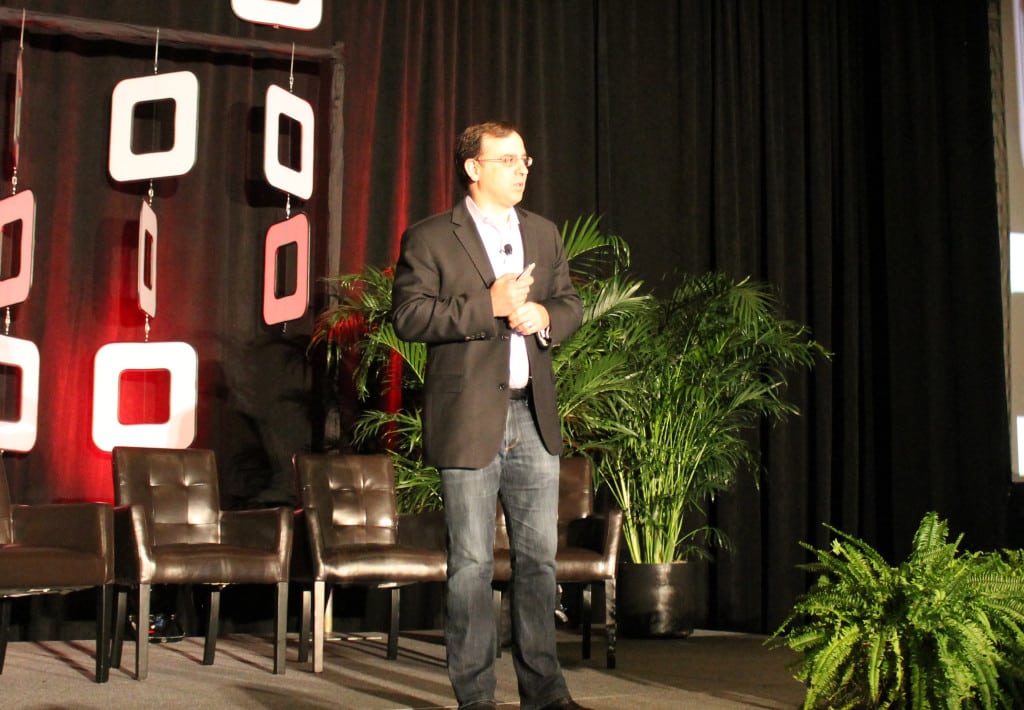
GE’s power sector customers, Bolick said, are seeing increasing volatility at the same time they are trying to ensure safe, secure, reliable, and sustainable generation. But this is both a challenge and huge opportunity. The industrial Internet of things, Bolick said, “represents a $1.3 trillion opportunity.”
Bolick pointed to the examples of Amazon, Uber, and Airbnb, which all seriously disrupted existing markets by leveraging data that their competitors were not collecting. Uber, Bolick noted, seized 28% of the Seattle taxi market in its first two years of operation using only a smartphone app.
Bolick, who previously worked for software and data analytics firm SAP, explained that SAP was so challenged by upstart competitors leveraging cloud computing that it had no choice but to buy them out—at a total of $15 billion.
One more example was electric vehicle firm Tesla, whose vehicles were digitized in a way that had never been attempted before. “This was a car that was designed very differently from what was being done in Detroit at the time.” He noted that while GM is setting aside hundreds of millions of dollars against potential recalls, Tesla was able to avoid one simply by using an over-the-air software update.
Disrupting the Power Sector
Changes like this are coming to the power sector, Bolick said.
“It’s important to start planning your path today, because the industrial internet will bring changes we can’t even imagine.”
What will that look like? A mix of new analytics, smart machines, big data, and a new, more digitally aware workforce. Digital technologies in the power sector will bring “greater visibility and insight” and “increasingly automated actions,” he said.
Plenty of data is being collected, but right now only 2% of it is being used. That has to change, “because the data we have is just going to continue to grow.”
The power sector needs the next generation of workers, who have grown up surrounded by digital technology, but attracting them means changing the way things are done. This incoming workforce is a different audience from previous generations, he said.
“That audience is going to want the experience of their IT systems in the plant to mirror what they experience as a consumer.”
Lower Costs, Higher Generation
GE has already seen dividends in helping clients harness digital technology, Bolick said. One customer in Europe reduced its generation costs by 50%, and was consequently able to run its plants 60% more than the previous two years.
He offered another example of a wind farm build using modular designs and digital infrastructure. That combination resulted in 20% higher generation.
Bolick described GE’s vision for the digital power plant, which creates a digital twin of the plant—a real time model based on rich data acquisition.
“It’s a model that has deep understanding of the operational mechanics, deep understanding of the physics, and a model that’s updated second-by-second.”
Though initially designed for GE’s gas turbines, it can also be applied to steam plants. Using the digital model can get the real one much closer to its design potential.
GE’s Predix platform can offer a mix of asset performance management, operations optimization, and business optimization, giving a plant “more output, more flexibility, driving down production costs” (Figure 3).
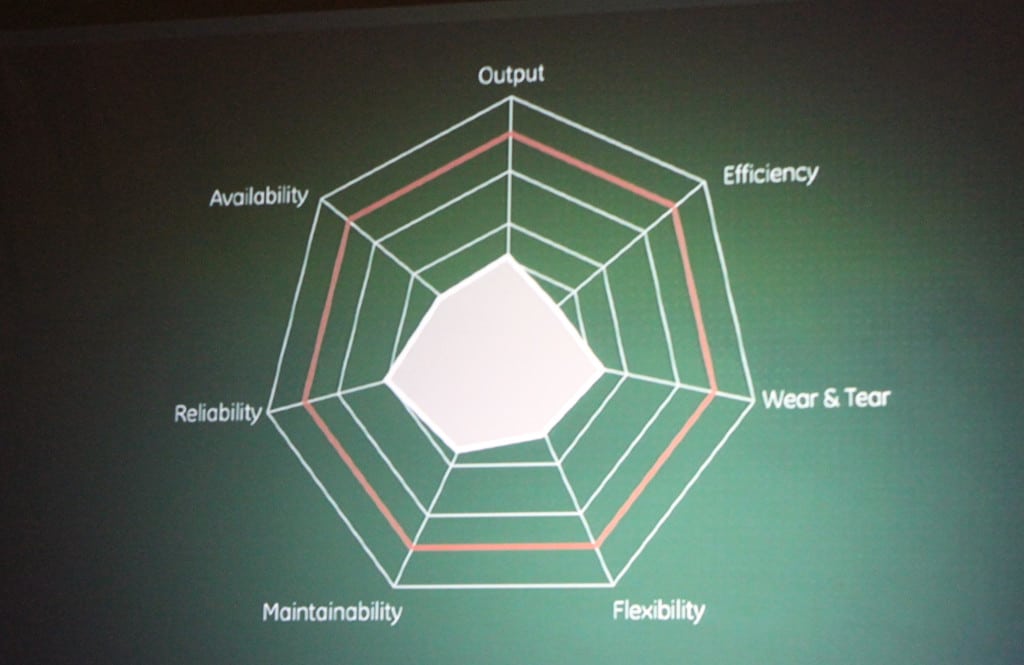
Better Positioning
Outside the plant, digital communications can help plants perform better in the marketplace. Bolick said that can mean getting 2% to 3% more power into peak periods of the market day-to-day. Digital models can also help optimize maintenance protocols and give plant managers insight into unplanned outages— before they occur.
“It should be able to help you across the balance of plant, not just looking at a single asset,” he said. “You can ensure that your assets are being optimized and being operated in the most efficient and profitable manner.”
In response to a question from the audience, Bolick stressed that cybersecurity is an integral piece of the puzzle. “Cybersecurity is built into everything we do,” he said. “We can do the anomaly detection as it occurs.”
Bolick closed by warning that digital technologies are coming whether generators are ready for them or not. It’s not a question of whether digital is coming, he said.
“It’s a question of how fast we’re going to drive down that road together”
—Thomas W. Overton, JD is a POWER associate editor (@thomas_overton, @POWERmagazine).







